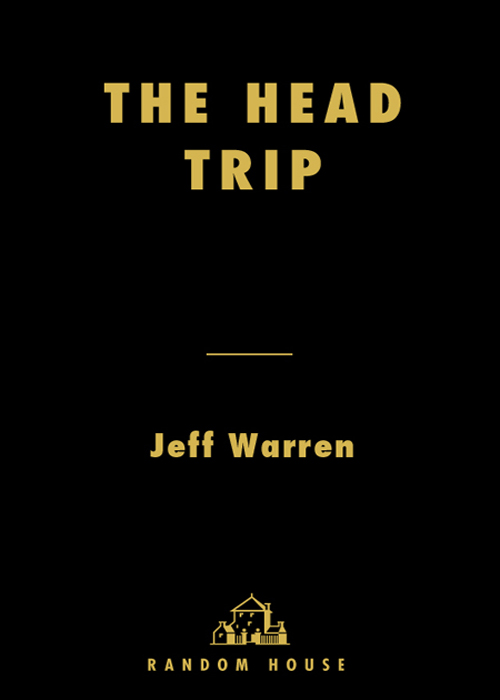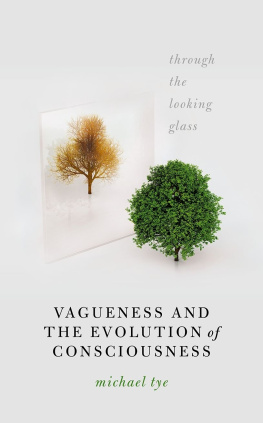


CONTENTS


For Kelly
AUTHORS NOTE
To deny the truth of our own experience in the scientific study of ourselves is not only unsatisfactory; it is to render the scientific study of ourselves without a subject matter. But to suppose that science cannot contribute to an understanding of our experience may be to abandon, within the modern context, the task of self-understanding. Experience and scientific understanding are like two legs without which we cannot walk.
Francisco Varela, Evan Thompson, and Eleanor Rosch, The Embodied Mind
The book you are holding is not a typical book on consciousness. Its not about qualia, or the language instinct, or what it feels like to be a bat.
Nor is it a typical brain bookdescribing how fear works, or the uses of the cerebellum, or what happens when you electrocute your amygdala.
While all these subjects are fascinating, they are philosophical and neurological discussions that are occurring elsewhere. And yet, both these kinds of books have contributed to this one, for occasionally as I have leafed through them, an author would remark (in a dry, offhand manner) on some aspect of subjective consciousnessthe feeling of time slowing down, perhaps, or the strange body twitches that happen at sleep onsetand I would nod, and look up, and think, Yeah, thats happened to me!
Well, this book is in part an encyclopedia of thats happened to me moments, organized by adventures through various familiar and less familiar states of consciousness. For this reason, this book is also about you, because you have these moments, too. And Ill say this outright: you wont believe where youve been, and where youre capable of going.
Although this is the first book that I know of that has attempted to document from the first-person how consciousness changes during wakefulness, sleep, and dreaming, it is not the first book to examine the intersection between the brain and personal experience. To the best of my knowledge, that honor belongs to Steven Johnson, whose pioneering Mind Wide Open was one of the inspirations for this book. The other author Id like to acknowledge is John Horgan. Anyone who has read his excellent Rational Mysticism will recognize how indebted I am to that book, which is a mighty oceanic source of provocative ideas about the mind. Horgan gave me the confidence to take on the inspired fringe.
I also want to thank my executive producers at CBC RadioPam Bertrand at The Current and Bernie Lucht at Ideaswho allowed me to adapt material from pieces I wrote for them. Of particular help was Alan Guettel, my fabulous producer on two sleep documentaries I did for Ideas, While You Were Out parts one and two. Another Ideas producer, Richard Handler, has also been a patient sounding board during many long discussions.
A taxonomy of acknowledgments:
Personal: My family and friends who have listened to me rattle on about the minds exotic razzle and occasionally let me try and hypnotize them. The ones listed here all helped me in many different ways: Toby Warren, Janie Warren, Micah Toub, Susan and Ted Warren, Matt Thompson, James Maskalyk, Elin Raymond, Alexandra Shimo, Jess Davies, Ben Priest, Mickey Inzlicht, Aaron Brindle, Pat Imlay, Simon Tuplin, Michael Banasiak, Chris Curran, Kate and Helen Baldus, Robin Bates, Brian Levine, Steve Luengo, Shaughnessy Bishop-Stall, Ian McRobie, Maria Lundin, Malcolm Jolley, James Prudhomme, and, of course, my partner in adventure, the incomparable Kelly Kirkpatrick.
Editorial: My brilliant editors in Toronto and New York: Anne Collins, Pamela Murray, and Stephanie Higgs, and freelance editors Catherine Marjoribanks and Tanya Trafford. Random House of Canada designer Kelly Hill, who designed most of the text-based figures and masterfully laid out what at times felt more like an out-of-control arts and crafts project than a book. My astute and supportive agents, Don Sedgwick and Shaun Bradley. And the Ontario Arts Council, for slipping me that much-needed grant.
Ideational: I had many scientific and professional guides through the diverse terrain of the mind, some via particularly helpful bookswritten by Andrea Rock, Andreas Mavromatis, Francisco Varela, Susan Blackmore, Daniel Goleman, Jim Robbins, Robert Ornstein, Brian Inglis, G. William Farthing, Rita Carter, John Geigerand the rest from interviews either conducted in person, over the phone, or in the CBC Radio studios: Charles Tart, Bernard Baars, Jamie MacFarlane, Zoe the hypnotherapist, my ADD Centre trainers Karin and Gord, Barbara Jones, Allan Hobson, Anne Harrington, Ben Rusak, Dominick Attisani, Bradley Hatfield, Vietta Wilson, William Dement, Adrian Burgess, John Taylor, Alan Wallace, Philippe Stenstrom, Joe Kamiya, Deirdre Barrett, Roger Ekirch, Carol Worthman, Mike Smolensky, Lynne Lamberg, Robert Stickgold, Jerome Siegel, Michel Jouvet, Edward Shorter, Richard Davidson, Antoine Lutz, and Antonio Zadra.
In addition, several of my primary interview subjects also read over portions of the manuscript, and thus are in another category altogether. They are: Evan Thompson, John Taylor, Smritiratna, Lynda Thompson, Maurice Barry Sterman, Herbert Spiegel, David Spiegel, John Gruzelier, Stephen LaBerge, Patricia Keelin, Thomas Wehr, and finally Tore Nielsen, the poor guy, who not only read the largest section of the manuscript but, as the first scientist I interviewed, has suffered more cajoling and entreaties and long, confusing e-mails from me than anyone else. Thank you, Tore, for your Buddha-like patience.

INTRODUCTION
Oh, do not ask, What is it?
Let us go and make our visit.
T. S. Eliot, The Love Song of J. Alfred Prufrock
Heres a curious phenomenon; maybe youve experienced it.
For several years in my mid-twenties I spent my summers tree planting in northern Ontario. It was a difficult job. Every morning at 5 a.m. some classic rock anthem would blare out across the makeshift camp and wed drag ourselves from our warm tents and pile into the rusted yellow school buses idling on the logging road. Out on the block, we were assigned huge chunks of napalmed land, uneven mixes of charred duff, swamp, and scraggly brush. For eleven hours wed plant little eight-inch saplingskick-shovel-draw-bend-insert-stomp, kick-shovel-draw-bend-insert-stomplittle mechanical humans jerking along the horizon. Every seven feet, several hundred an hour, several thousand a day. It was fantastically tedious, made worse by bone-chilling drizzle, a fog of biting blackflies, hidden wasps nests, thickets of sharp sticks, and patrolling bears whod ransack our lunches and terrorize the cooks.
Beginner planters spent their time in an agony of unhappiness and frustration. But as the weeks wore on the privations lessened, in part because we became habituated to the job, but also because of an odd recurring experience that some of us discussed among ourselves.
Next page
















